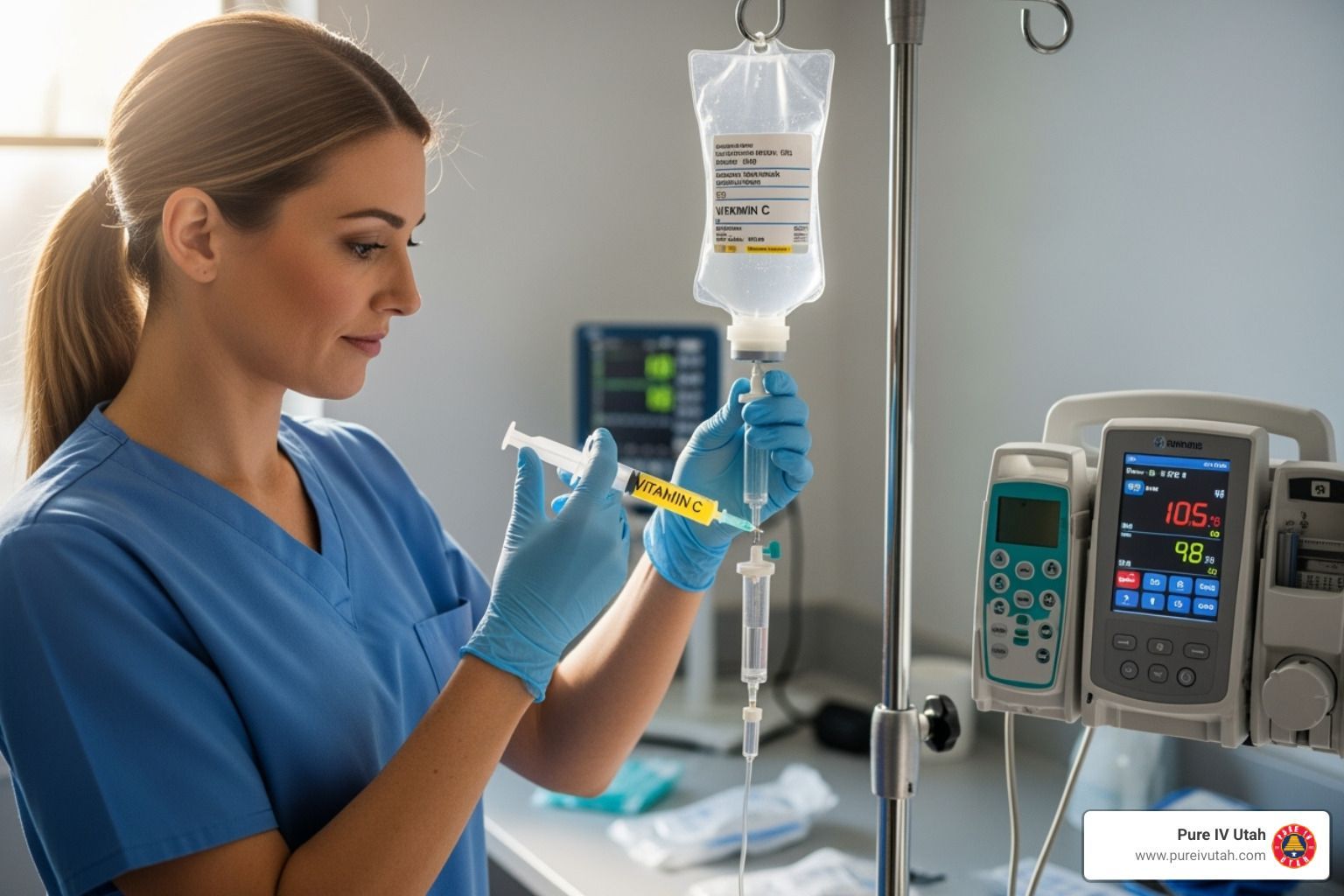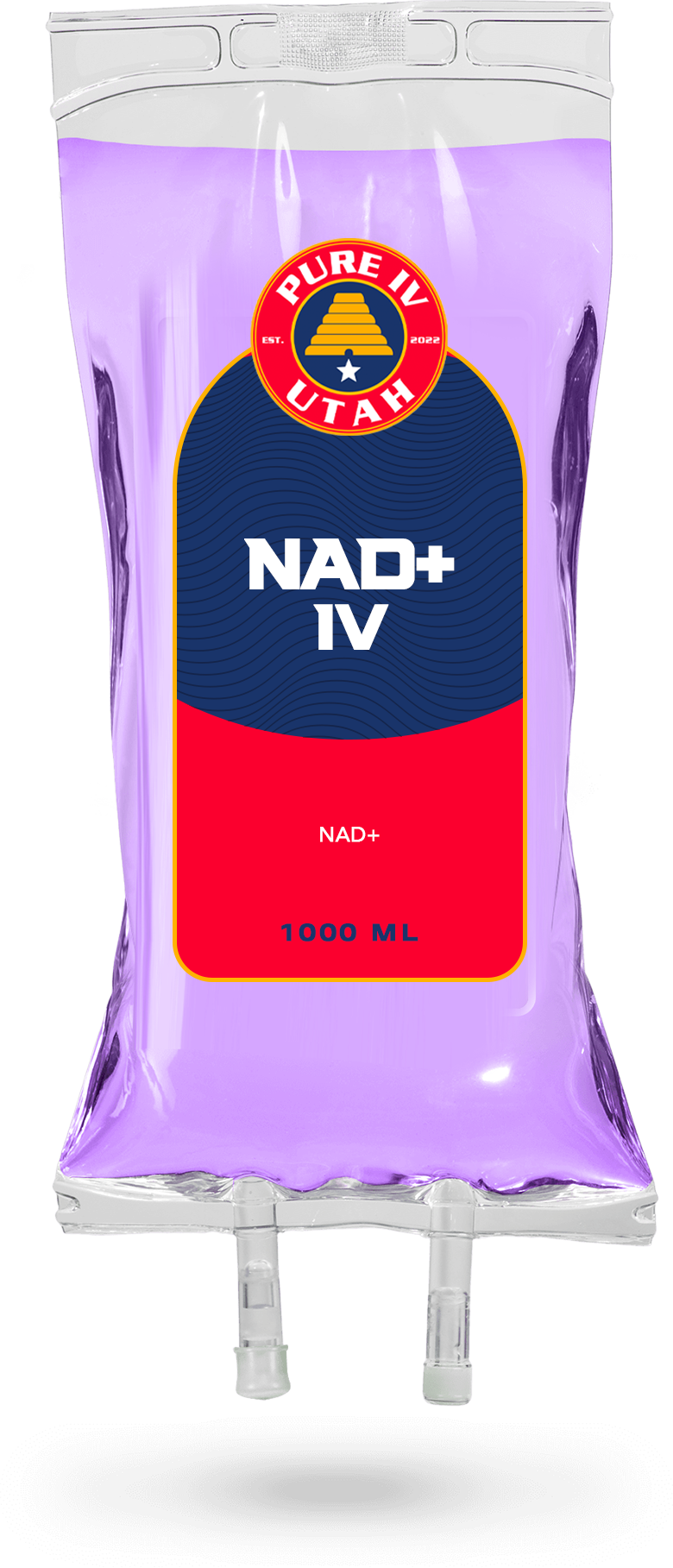IV Infusion Side Effects: Risks, Complications, and Safety

Medically reviewed by Micaela Strevay, FNP-C, PMHNP-BC
Joseph Lopez • September 17, 2025
Table of Contents
IV infusion therapy is becoming a major health and wellness trend. But what exactly is it?
An IV infusion is a medical procedure that delivers fluids, medications, or nutrients into your blood vessels through an IV line. Because it bypasses the digestive system, the body absorbs nutrients more quickly and in greater amounts.
Athletes, busy professionals, and people with chronic fatigue all use it to feel better and recover faster. Although IV infusion services are common in hospitals, they are now widely offered in infusion centers and IVNT health clinics.
Like any treatment, IV infusions bring relief, but they also pose certain risks and side effects.
The Possible Side Effects of IV Infusions
IV infusion side effects vary depending on the individual, the infusion type, and the provider’s expertise. Most side effects are mild and temporary, but some can escalate if not addressed quickly.
Common Side Effects
These are the mild effects some people may experience during or shortly after an infusion. They usually resolve on their own without treatment.
- Dizziness or lightheadedness may occur as the body adjusts to the fluids.
- Small changes in blood pressure during the infusion. Either rising or dropping slightly during treatment.
- Mild infusion reactions such as headache, nausea, or fatigue.
- Temporary chills or low-grade fever as the body responds to the infusion.
These effects are usually short-lived and are monitored by the healthcare provider during the procedure.
Insertion Site Reaction
Because an IV line goes directly into the vein, the insertion site can sometimes develop local reactions. These can include:
- Bruising or tenderness around the needle entry point.
- Skin reactions such as redness, itching, or mild swelling.
- Infection at the site, leading to purulent drainage or worsening swelling if left untreated.
- Phlebitis (inflammation of the vein) may cause pain or irritation.
Proper needle placement and sterile technique reduce these risks. Patients should monitor the site afterward for any unusual pain or discharge.
Moderate to Severe Side Effects
Although uncommon, serious complications can happen. These require immediate medical attention.
- Allergic reactions to the infused solution may cause rash, difficulty breathing, or swelling.
- Extravasation (fluids leaking outside the vein) may cause tissue damage or skin necrosis.
These complications are rare but require immediate attention
Long-Term Risks of IV Infusion Therapy
Most people tolerate IV infusions well, but repeated or poorly managed use can lead to longer-term concerns:
- Scarring or vein damage: Frequent needle insertions may cause scar tissue to build up, making future IV access more difficult.
- Kidney damage and liver strain: High doses of certain vitamins, such as vitamin C, or medications processed by these organs, place extra stress on them, especially those with existing medical conditions.
- Imbalanced electrolytes: Overuse of IV fluids can upset the body’s sodium, potassium, or magnesium levels. This can lead to muscle weakness, irregular heartbeat, or confusion.
- Nutrient overload: Unlike oral supplements, where excess vitamins are often excreted, IV therapy delivers concentrated doses that may accumulate in the body if not monitored.
- Psychological reliance: Some individuals may come to depend on IV vitamin therapy for energy or wellness. They might use it as a substitute for essential lifestyle habits like proper sleep, nutrition, and exercise.
While these risks are uncommon, they highlight why IV therapy should be guided by a licensed healthcare provider and integrated responsibly into your overall health routine.
Risk Factors That Increase Side Effects
Certain factors can make IV therapy side effects more likely and severe:
- Pre-existing conditions like kidney failure, liver problems, or heart problems.
- Untrained providers or infusions done outside of professional medical settings.
- Poor sanitation or contaminated equipment.
- Frequent or unnecessary infusions can overwhelm the body.
You should always disclose your full medical history to your healthcare provider before beginning IV therapy.
How to Reduce the Risks of IV Therapy

Most IV therapy side effects can be prevented with the right precautions:
- Choose a licensed healthcare provider for all infusions, like Pure IV Utah, where our licensed professional will take care of every detail of your therapy.
- Ensure sterile technique is used to prevent infections.
- Monitor for pain, swelling, or unusual reactions at the infusion site.
- Follow a treatment schedule tailored to your needs, rather than overusing IV therapy.
When to Seek Medical Attention
Seek immediate medical help if you experience:
- Severe allergic reactions, such as difficulty breathing or swelling.
- Persistent pain, redness, or discharge at the infusion site.
- Signs of infection, including fever or pus at the needle entry point.
- Symptoms such as chest pain, confusion, or fainting.
IV therapy offers effective treatment and real benefits, but it does carry some risks. The best way to stay safe is by working with a licensed provider. Pay close attention to how your body responds during and after treatment. If anything feels unusual, seek medical attention right away. These steps help reduce infusion-related reactions and enable you to get the most out of IV therapy, while also protecting your quality of life.




